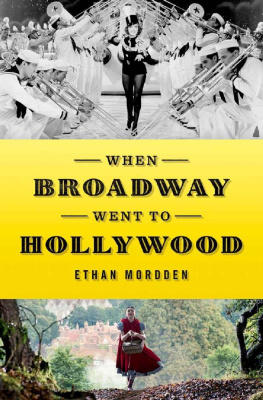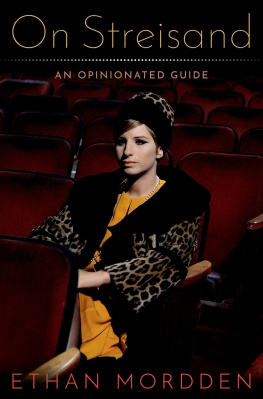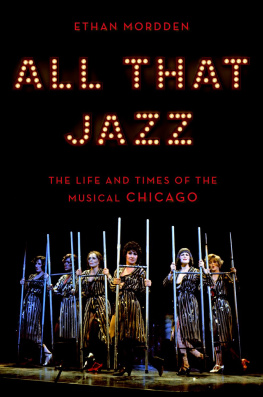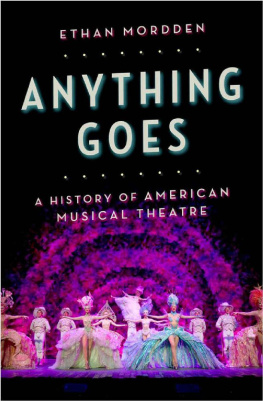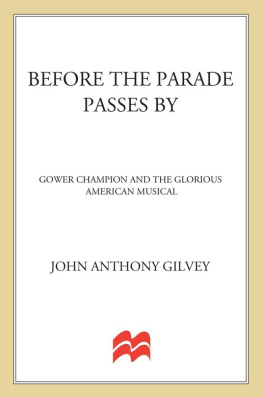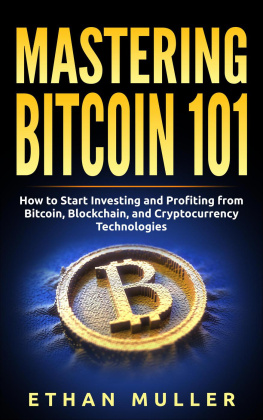Ethan Mordden - When Broadway went to Hollywood
Here you can read online Ethan Mordden - When Broadway went to Hollywood full text of the book (entire story) in english for free. Download pdf and epub, get meaning, cover and reviews about this ebook. year: 2016, publisher: Oxford University Press, genre: Art. Description of the work, (preface) as well as reviews are available. Best literature library LitArk.com created for fans of good reading and offers a wide selection of genres:
Romance novel
Science fiction
Adventure
Detective
Science
History
Home and family
Prose
Art
Politics
Computer
Non-fiction
Religion
Business
Children
Humor
Choose a favorite category and find really read worthwhile books. Enjoy immersion in the world of imagination, feel the emotions of the characters or learn something new for yourself, make an fascinating discovery.
- Book:When Broadway went to Hollywood
- Author:
- Publisher:Oxford University Press
- Genre:
- Year:2016
- Rating:3 / 5
- Favourites:Add to favourites
- Your mark:
- 60
- 1
- 2
- 3
- 4
- 5
When Broadway went to Hollywood: summary, description and annotation
We offer to read an annotation, description, summary or preface (depends on what the author of the book "When Broadway went to Hollywood" wrote himself). If you haven't found the necessary information about the book — write in the comments, we will try to find it.
When Broadway went to Hollywood — read online for free the complete book (whole text) full work
Below is the text of the book, divided by pages. System saving the place of the last page read, allows you to conveniently read the book "When Broadway went to Hollywood" online for free, without having to search again every time where you left off. Put a bookmark, and you can go to the page where you finished reading at any time.
Font size:
Interval:
Bookmark:

Ethan Mordden


Oxford University Press is a department of the University of Oxford. It furthers the Universitys objective of excellence in research, scholarship, and education by publishing worldwide. Oxford is a registered trade mark of Oxford University Press in the UK and certain other countries.
Published in the United States of America by Oxford University Press 198 Madison Avenue, New York, NY 10016, United States of America.
Ethan Mordden 2016
All rights reserved. No part of this publication may be reproduced, stored in a retrieval system, or transmitted, in any form or by any means, without the prior permission in writing of Oxford University Press, or as expressly permitted by law, by license, or under terms agreed with the appropriate reproduction rights organization. Inquiries concerning reproduction outside the scope of the above should be sent to the Rights Department, Oxford University Press, at the address above.
You must not circulate this work in any other form and you must impose this same condition on any acquirer.
Library of Congress Cataloging-in-Publication Data
Names: Mordden, Ethan Title: When Broadway went to Hollywood / Ethan Mordden.
Description: New York, NY : Oxford University Press, [2016] | Includes bibliographical references and index.
Identifiers: LCCN 2016012583| ISBN 9780199395408 (alk. paper) | ISBN 9780199395422 (epub)
Subjects: LCSH: Motion picture musicUnited StatesHistory and criticism. | Musical filmsUnited StatesHistory and criticism.
Classification: LCC ML2075 .M652 2016 | DDC 791.43/6dc23 LC record available at http://lccn.loc.gov/2016012583
1 3 5 7 9 8 6 4 2
Printed by Sheridan Books, Inc., United States of America
To John Cronwell
To my friendly neighborhood agents Joe Spieler and Kent Wolf; to Ron Mandelbaum at Photofest; to Clint Bocock; to Ken Mandelbaum; to Matthew Kennedy; and to my fine editor at Oxford, Norman Hirschy.

Rose-Marie without Indian Love Call. This (now lost) first of three films drawn from the famous stage operetta of 1924 was a silent (1928). An operetta without its vocals is like France without champagne. But The Jazz Singer, released four months earlier, had only just introduced singing to Hollywood. Within a year, the studios would be producing plenty of all-talking, all-singing, all-dancing musicals, the utmost in sound films, many written fresh for the screen by Broadway masters. Above, left to right, Mountie Sgt. House Peters, heroine Joan Crawford, and innocent murder suspect James Murray.

Above, another lost film: Guinn Williams and the real-life Funny Girl, Fanny Brice, in a part-talkie, My Man (1928). A silent containing song spots for the star, in the Jazz Singer manner, this film was a traditional weepie with a very untraditional heroine, a New York favorite but too special for the national taste. It is as if Broadway and Hollywood were two different countries, with divisive sets of language, currency, mores. At times, they engage in trade. More often, however, they get into disputes, especially over how special the stars and songs of a musical can be. A smash comic and singerthe Parisian Mistinguett introduced the song My Man, but Brice made it her ownBrice never caught on in film. Ironically, after her death, Hollywood was finally ready for her as played by Barbra Streisand in Funny Girl.

Above, The Wedding of the Painted Doll, in the first full-scale movie musical, The Broadway Melody. Note that, from the start, Hollywood needed New York as an authenticity enabler in its backstagersits the Broadway melody, because, obviously, there wasnt any Hollywood melody to speak of yet. Further, in another usage of the stage, the chorus above is all-female, even Buster Brown (at far left) and the bridegroom and preacher (at center). Women in drag had been a routine feature of the stage musical since the days of early burlesque, in the 1870s. Nevertheless, MGM commissioned The Broadway Melodys songs from Nacio Herb Brown and Arthur Freed, not New Yorkers but California residents.

Two adaptations from Broadway: above, The Cocoanuts (note Zeppo and Groucho Marx and, at far right, Margaret Dumont). Below, Top Speed, with Laura Lee and Joe E. Brown.


Both The Cocoanuts and Top Speed came out in 1930, when a musical-weary public began a boycott of the form. To survive, The Cocoanuts dropped almost all of its score and Top Speed used just a few songsnew ones, by California writers. Then, in 1933, it was Everybody onstage for the garlands number! as 42nd Street, above, brought the musical back into favoragain, with a score by a neighborhood team, Harry Warren and Al Dubin. Look for Dick Powell (at far left), director Warner Baxter (at center, back to us), and star Bebe Daniels (at right). Sharp eyes will pick out Ginger Rogers (seventh from left, sitting with the man in the dark sweater) as pretentious Anytime Annie, complete with monocle.

Each studio had a first-rate home songwriting team, like Brown and Freed or Dubin and Warren. Yet Hollywood couldnt get along without the big Broadway names, and by the mid-1930s they were dominant, as here with Irving Berlins Follow the Fleet (1936), starring Fred Astaire and Ginger Rogers. Above, the Second Couple, Harriet Hilliard and Randolph Scott. Hilliard was a band singer (and, later, the better half of televisions The Adventures of Ozzie and Harriet). Scott, however, neither sang nor danced. He just hunked. Hollywood created this breakaway from the Broadway model, wherein the romantic leading man sang as a rule. In the movie musical, however, not only Scott but Tyrone Power, William Holden, and many others could play a sweetheart without sharing in the music.

Cole Porters best original Hollywood score was for
Font size:
Interval:
Bookmark:
Similar books «When Broadway went to Hollywood»
Look at similar books to When Broadway went to Hollywood. We have selected literature similar in name and meaning in the hope of providing readers with more options to find new, interesting, not yet read works.
Discussion, reviews of the book When Broadway went to Hollywood and just readers' own opinions. Leave your comments, write what you think about the work, its meaning or the main characters. Specify what exactly you liked and what you didn't like, and why you think so.

